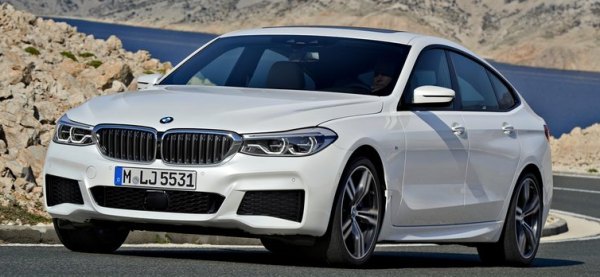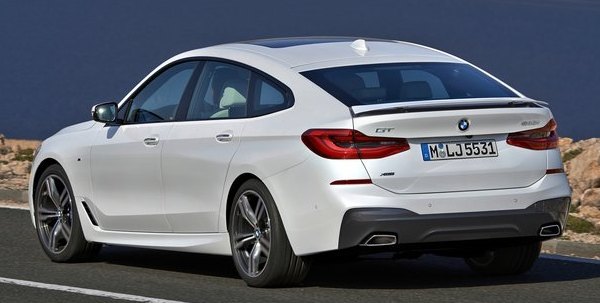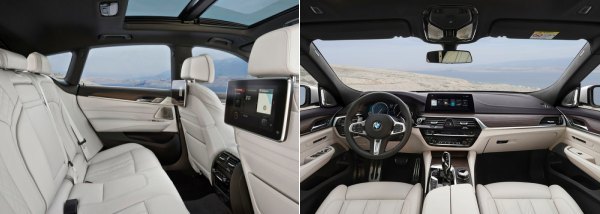Published
on 14
Oct 2017
|
All rights reserved.
|
|
|

|
|
A
new name and a faster back can't save a flawed concept.
|
|
The
outgoing 5-Series GT (Gran Turismo) was one of the most unloved
children of BMW. Although it offered 7-Series level of space at
5-Series prices, accompanied with the convenience brought by a large
liftback, it didn't quite get on with buyers, blame to its odd looks
and weak dynamics. During its 8-years life, only 150,000 units were
sold. Nevertheless, BMW finds it quite well received in China, so it
wants to give the car a second chance. This time around, it changes to
a sportier look accompanied with a more upmarket name, 6-Series GT
(Gran Turismo). Confusing? Yes, because the car has not much
relationship with the current 6-Series Coupe, Cabriolet and Gran Coupe.
When those cars are replaced by the new 8-Series next year, the Gran
Turismo will be the only 6-Series left, and it will change our
perception of the nameplate from a stylish coupe to an ugly large
hatchback, unfortunately.
Despite the shift of name and styling strategy, the essence of the car
is actually unchanged. It remains a jumbo-size and relatively tall
hatchback. It is again sized between the 5 and 7-Series, while most of
the underpinnings come from the former. Compared with a 5-Series sedan,
it is 155mm longer, 34mm wider and 59mm taller, whereas wheelbase is
lengthened by 95mm to 3070mm, or identical to the standard 7-Series.
Compared with its predecessor, it is also significantly longer, though
the roof is lowered by 21mm. The roof line also drops faster to give
the car a stronger sense of coupe. No, you won’t confuse it with a
coupe, just like the case of BMW X6, because this is still a rather
tall and bulky object on the road. It might be easier to eyes than its
predecessor, but in no way we can describe it as handsome.

|
|
This
is the only BMW currently on sale that feels completely unexciting to
drive...
|
|
The GT’s chassis owes a lot to the 5-Series, so
unsurprisingly it is constructed out of high-strength steel and
aluminum. The latter includes the engine cradles, suspensions, bonnet,
tailgate and doors. This helps it to undercut its predecessor by an
average 150 kg on scale, although it is still 180 kg heavier than the
equivalent 5-Series sedan. The suspension comprises of both 5 and
7-Series elements – the rear comes straight from the 5-Series Touring
including its self-leveling air springs and compact design that lowers
the load bay. The front suspensions are taken from the 7-Series so to
allow the optional air springs that are omitted on the 5er. It goes
without saying this change is driven by the demand of China, whose
customers prefer pillowy ride to spirited handling. Like its siblings,
the car can be fitted with adaptive dampers, active anti-roll bars and
4-wheel steering at extra costs.
Unsurprisingly, the cabin shares the 5-Series' dashboard and all
switchgears to save cost, which is no bad thing. Compared with
5-Series, the seating position here is raised by 60mm in order to give
an SUV-like commanding view on the road. Whereas the old car had the
rear seats mounted even higher in theater-style, the new car has it
lowered by 30mm to align with the front so that the faster roof line
does not rob any rear headroom. As a result, the cabin remains
spacious, just as spacious as a 7-Series in fact. It offers vast of
leg, head and shoulder room. Benefited by the stretch of body length,
boot capacity is increased from 500 to 610 liters. This can be
increased further to 1800 liters when stack up to the roof. The
tailgate has ditched the old car’s complex split function, but it
remains electrically operated. Because the faster angle rear window
generates more aerodynamic lift, an active spoiler is added to the end
of tailgate. This also helps lowering drag coefficient to merely 0.25
for the base model.

|
|
The
cabin is just as spacious as a 7-Series.
|
|
The GT’s
powertrain choices are limited to only three: 258hp 2-liter turbo
(630i), 265hp 3-liter turbo diesel (630d) and 340hp 3-liter turbo
petrol (640i), all are well familiar to us. Inevitably, hauling the
heavy car even the top straight-six hardly feels punchy. It is more
about smoothness and refinement, particularly thanks to the extensive
sound deadening. No one has tried the four-cylinder petrol yet, but I
suppose it won’t be a sensible choice unless being used as a company
car.
The weakest link of the 6-Series GT is handling. Its steering is
deliberately tuned lighter than the norm of BMW in order to please
Chinese drivers (or chauffeurs). Likewise, the suspension is more about
ride comfort than body control. Even on cars fitted with all the
optional suspension equipment, it still shows more pronounced body roll
in corners than a 5-Series Touring, which is amplified further by the
high seating. It feels heavier, less eager to turn and more desire to
understeer when you try to push it. In short, it is not qualified to be
a BMW, even though the standards of BMW have been lowered somewhat in
recent years. This is the only BMW currently on sale that feels
completely unexciting to drive. However, it is not the first, because
its predecessor the 5-Series GT was.
|
Verdict:    |
|